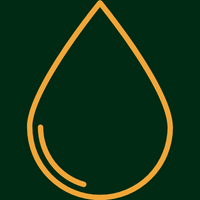Hoya merrillii
Origin and Description:
Hoya merrillii was first discovered by the renowned American botanist Elmer Drew Merrill, who collected it on the island of Mindoro in the Philippines. Officially described in 1904 in Fragmenta Florae Philippinae by Friedrich Schlechter, this Hoya species is now known to have a wider distribution across the Philippines. It thrives in tropical, low-altitude regions and is especially noted for its stunning visual characteristics. The plant boasts thick, glossy, heart-shaped leaves that can develop a rich red or purple hue when exposed to bright light. Its blooms are particularly captivating, with clusters of fragrant, star-shaped flowers in shades of pale yellow to cream, which are typical of many Hoya species.
Natural Habitat:
Hoya merrillii is native to the warm, humid forests of Mindoro Island, where it grows as an epiphyte, often attached to tree branches near water sources. The plant is adapted to dappled light conditions and thrives in areas with constant moisture from the surrounding environment. As an epiphyte, it absorbs nutrients and moisture from the air rather than relying on the soil, which is why it prefers well-aerated growing mediums.
Care Instructions:
- Light: Hoya merrillii prefers bright, indirect light. Brief exposure to direct sunlight can help enhance the reddish hues of its leaves, but too much can cause leaf burn.
- Watering: Water thoroughly, allowing the top few inches of the soil to dry out between waterings. Ensure that the potting medium drains well to avoid root rot.
- Humidity: This plant thrives in high humidity, ideally between 60-80%. It can tolerate lower levels but will perform best in a more humid environment.
- Temperature: Optimal growth occurs between 65-85°F (18-29°C). Avoid cold drafts or temperatures below 50°F (10°C).
- Soil: Use a well-draining mix, such as orchid bark, perlite, and coco husk, to replicate its natural epiphytic growing conditions.
Fun Fact:
The flowers of Hoya merrillii are not only fragrant but are also long-lasting, often blooming for several days. The leaves can turn a beautiful reddish or purple color when exposed to sufficient light, making this plant a favorite among collectors for its dynamic appearance.
- In stock, ready to ship
- Inventory on the way
In-Store Pickup
Unsolicited Plant Talks
34162 Avenue G, Yucaipa CA 92399












